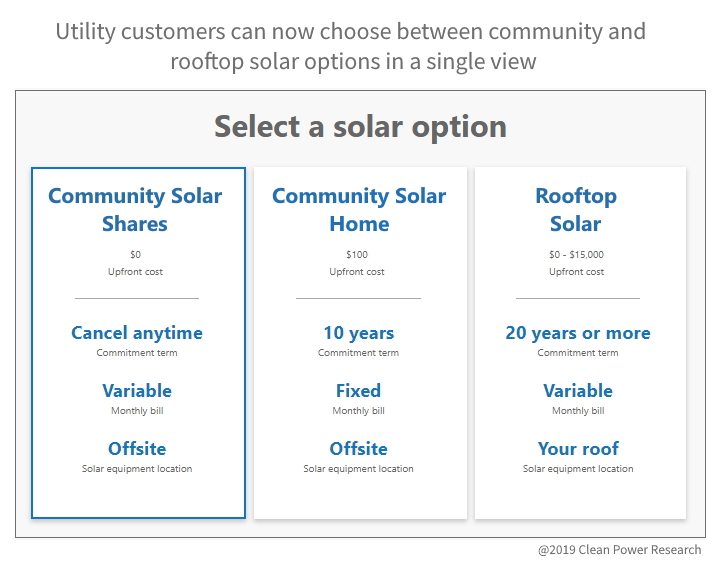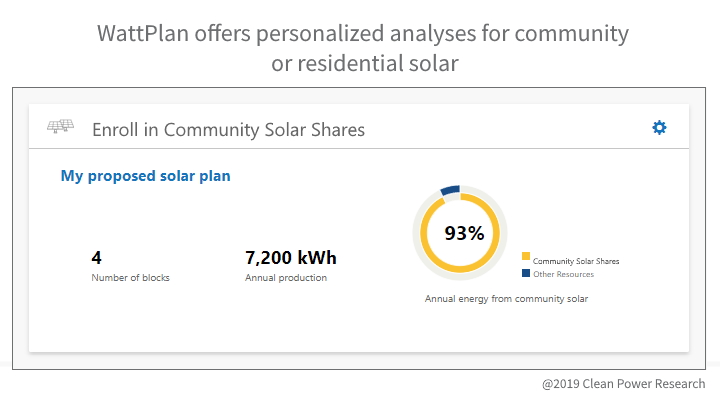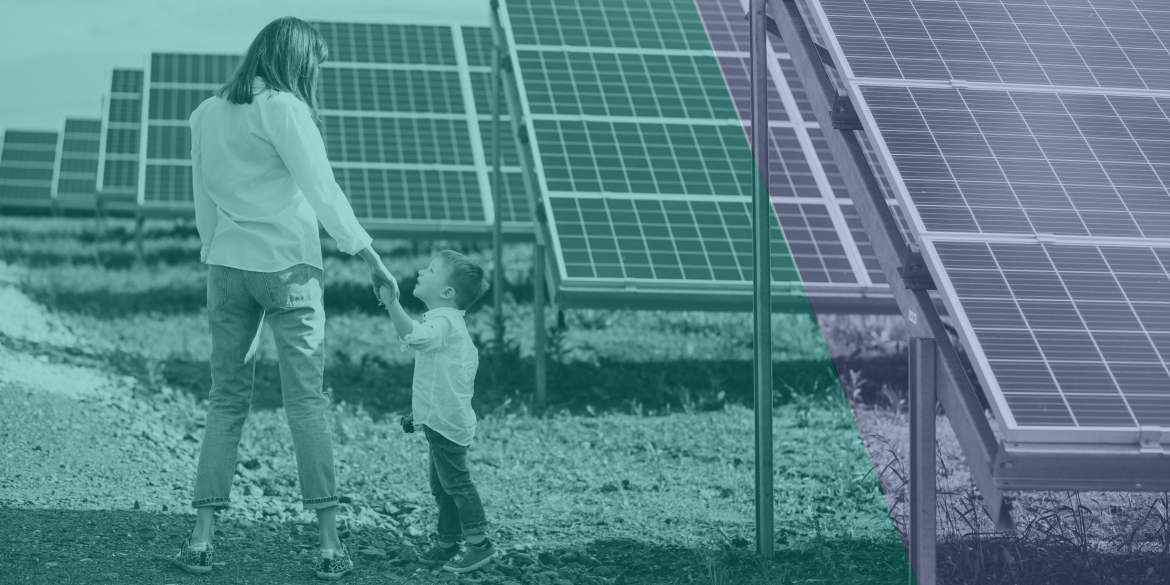Solar energy production is booming in the United States. According to the EIA (U.S. Energy Information Administration), “U.S. solar generation has increased from 2 million MWh in 2008 to 96 million MWh in 2018.” The growth of solar has coincided with the proliferation of new energy program options for utility customers such as community solar. And these programs are evolving. According to NREL’s (National Renewable Energy Laboratory) Research Scientist Jenny Heeter:
“We are seeing more projects that look like community solar but don’t match the traditional definition. And we will see more divergence in project design as costs fall and people find new ways to make larger-scale shared solar work.”
Utilities need better ways to promote and explain the breadth of their energy programs, even beyond community solar. These can include a broad range of offerings such as electric vehicle (EV) charging time-of-use pricing plans, rooftop solar, battery storage and other customer programs.
In this blog post, we’ll look at community solar programs and how utilities can maximize program ROI and streamline enrollment using WattPlan® and PowerClerk®.
Rooftop solar vs. community solar
It’s a fact that residential solar has become more and more affordable over time. According to a June 2019 SEIA (Solar Energy Industries Association) report, “An average-sized residential system has dropped from a pre-incentive price of $40,000 in 2010 to roughly $18,000 today.”
While this is great news for many homeowners, there are people that cannot take advantage of these residential solar price reductions simply because costs remain out of reach, they are renters, or they may not have solar-suitable roofs. In fact, a 2015 NREL study found that only about half of residential and commercial rooftops are suitable for onsite solar PV.
This is where community solar programs come in. Significantly, such programs not only address consumer demand and make solar available to underserved groups, they can also provide benefits to utilities.
Community solar is growing in the United States
Community solar programs—sometimes referred to as solar gardens or shared solar—give utility customers the ability to purchase power from local solar installations. In these programs, one or more solar power projects are developed and maintained by the utility or a third-party. Typically, customers become subscribers to a share of the output of the facility. In return, they receive a credit for their share of the power produced over a period—often a billing period—in the form of a credit on their electric bill.
The specific models, costs and benefits of each program vary across the U.S., but overall, community solar is growing. In August 2014, there were 41 community solar programs spanning 19 states with a capacity of 172 MW. Compare that to July 2019, where there were community solar projects in 40 states plus Washington D.C. with a capacity of more than 1.3 GW.
Community solar can be a win for customers that want to go solar but might not otherwise be able or willing to install solar at their residence. Community solar can also be a win for the utility. It helps utilities to address growing customer interest in solar energy, meet renewable energy mandates and locate solar projects where they can benefit grid operations.
Community solar adds complexity: WattPlan® is the solution
For customers, while community solar offers improved access to solar power, it also adds complexity to the decision-making process. For utilities, community solar adds yet another variable to the challenge of effectively engaging customers about their electric rate and distributed energy resource (DER) options such as solar, storage and EVs.
One way utilities can address the proliferation of program options is to give their customers access to self-service tools specifically designed for utility customer engagement. The challenge is to find a customer engagement solution that offers accurate and objective insight, and is accessible and easy to use. The solution should:
- Provide personalized information that is based on the utility customer’s location, load profile, available electric rates, current equipment prices and other variables
- Support a single view of the utility’s programs and DER options—such as rooftop solar and community solar—in a cohesive user experience
- Have an easy-to-navigate user interface that is available 24/7
One such tool is WattPlan®, a customer engagement software service that is used by more than 20 U.S. utilities to help their customers evaluate rooftop solar, storage, EVs and electric rates—and now community solar.
WattPlan now delivers personal community solar advice
With WattPlan®’s community solar capability, utilities can now offer personalized, comprehensive and objective advice on rooftop solar and community solar in a single, cohesive user experience. WattPlan®’s community solar module is designed in a flexible manner to accommodate most variations found among community solar programs.

In a typical WattPlan® implementation, the community solar module suggests an appropriate subscription based on the utility customer’s actual load profile. The subscription recommendation can be based on available blocks of community solar capacity (in kW), or a specific amount of energy offset each month. WattPlan® models the expected production of the community solar system using SolarAnywhere® Data, and calculates the charges and credits resulting in a comprehensive financial analysis.
The specific details of a program are defined by the utility and configured in the software during the setup process. These values can easily be changed over time as new programs come online or existing programs change.

Connecting program education to enrollment
Clean Power Research customers that leverage WattPlan and PowerClerk are now able to enroll customers in a community solar program directly from WattPlan® with the click of a button. Authenticated customer information can be instantly pushed into a program workflow utilizing PowerClerk.
Using PowerClerk, the utility can configure the workflow to meet their needs, including:
- Automated email communications that notify the customer of statuses
- E-signatures that make contract signing a breeze
- Integration with the utility’s customer information system using a straightforward web adapter
- A reliable system of record to manage community solar programs now and into the future
Utilities that license both WattPlan® and PowerClerk can improve customer satisfaction, streamline internal processes and help drive greater program adoption. Not only can utilities build awareness with a dynamic, informative and interactive experience using WattPlan—they can also take advantage of workflow processes in PowerClerk that speed-up enrollment and improve records management.
